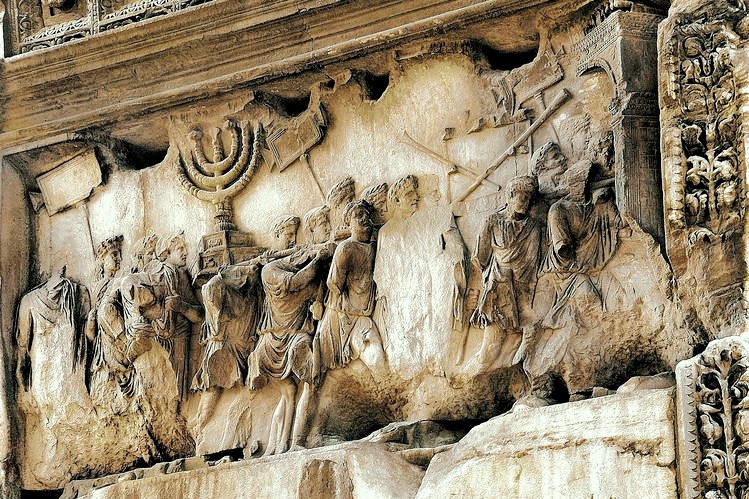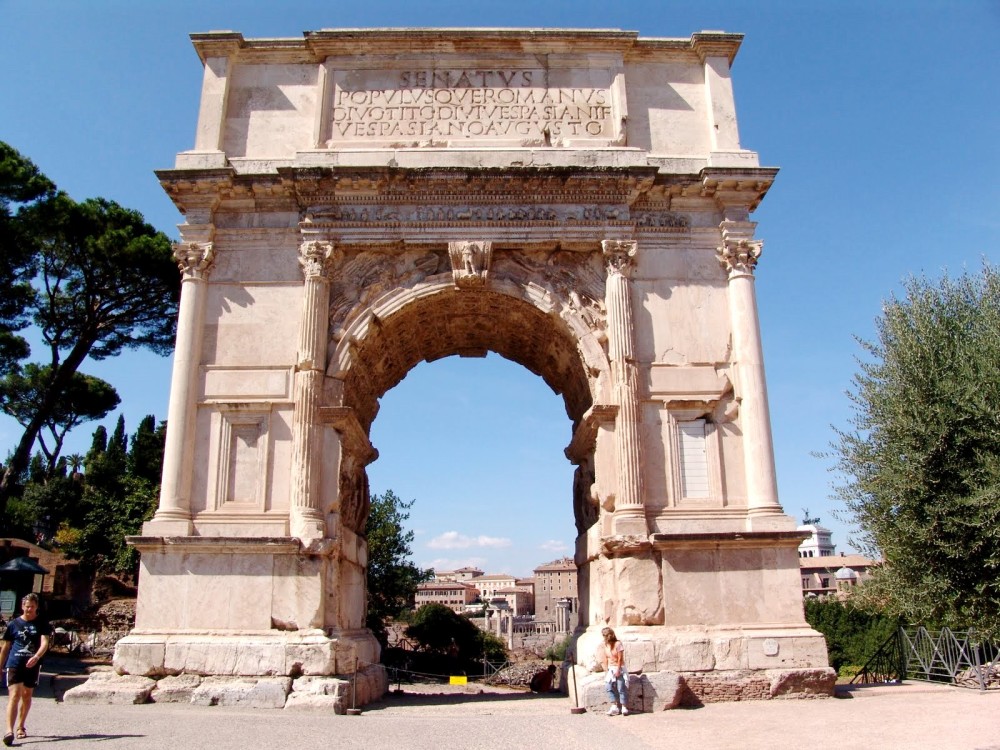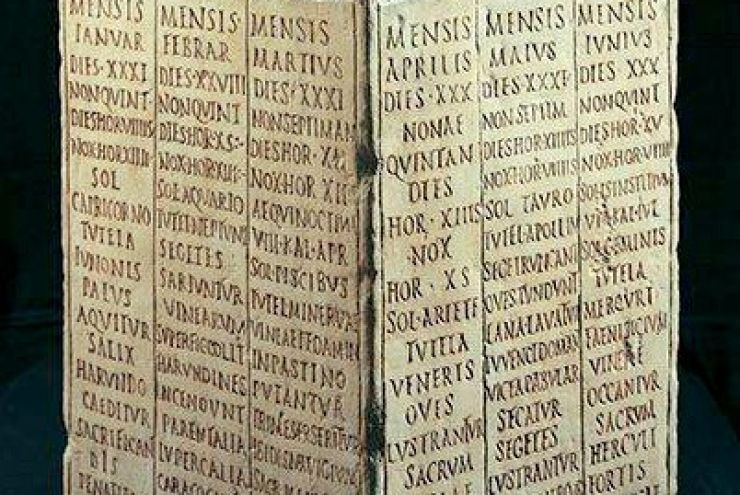 When we look at our monuments, we actually see a hologram, a projection of material evidence on the surface of the temporal present. If we do not make an effort to perceive and understand its verticality with the relative overlap of the eras that followed one another, we can make a colossal blunder. To make a comparison, it is as if we met the fossil of a fish in the Dolomites and from this we deduced that fish sometimes go to the mountains to ski …
When we look at our monuments, we actually see a hologram, a projection of material evidence on the surface of the temporal present. If we do not make an effort to perceive and understand its verticality with the relative overlap of the eras that followed one another, we can make a colossal blunder. To make a comparison, it is as if we met the fossil of a fish in the Dolomites and from this we deduced that fish sometimes go to the mountains to ski …
It does not work like this, you need to understand the history and put yourself in the shoes of those who actually built the monuments, before any subsequent instrumentalization. Stopping on the surface of the stone and grasping only its contemporary projection with its cheap interpretation of the moment does not help anyone.
A provocative article appeared in “Forward” by Michael Weiner, in the wake of the iconoclastic wave that arose recently in the USA, in a completely different context from ours, proposes to tear down the Arch of Titus, basically for the following two reasons:
- The arch celebrates the victory of Rome in the Jewish wars, which were waged with a very bloody repression against the rebels. The Arch is defined as a means of propaganda to celebrate the bloody conquest of Rome.
- The arch was used by the popes as an emblem of the persecution of the Jews: in 1555 Pope Paul IV forced the Jews of Rome to renew their submission every year by staying under the arch. In 1821 Pope Pius VII restored the Arch by adding a plaque on the fact that the restoration was also carried out for religious reasons.
And so the unfortunate monument becomes a victim of the hologram and symbol of something for which it was not built.
Although the proposal of destruction can be provocative and not serious in intent, it definitely makes the stomach ache and induces us to raise our voice with full force and determination, because even if the intent can be only theoretical and provocative , the mother of the idiots is always pregnant and some demented troll might have a wonderful idea to enliven the Roman nights at the Forum.
Critical revision of history is not condemned here, even when we might not like a different perspective. History itself is not a flow of facts, but its interpretation that changes according to the society, the time, the sensitivity of the historian: we welcome any intellectual stimulus that proposes a revision and offers new food for thought. But it is an unforgivable mistake to bend the facts and rewrite the news for one’s own use and consumption. Canceling a millennial monument goes exactly in this direction, in the destruction of the testimony on which the entire interpretative structure of the historian is built. In other words, we are facing an operation worthy of 1984 by Orwell.
So we say a clear “NO”, based on pure principles, and we shout it, in any way you wish to interpret the facts, a “NO” made of letters and ready to be put into action. In no uncertain terms: whoever destroys monuments is a criminal, but whoever proposes their destruction is also stained with instigation to commit a crime, which is in any case a crime itself.
Let’s go to the specific. First of all, every people has its own stones to be safeguarded: they make history, self-awareness, the window on something of which we would otherwise not have visibility, due to our limited existence. We, born in the twentieth or twenty-first century, can admire a monument that has crossed time like a spaceship from an unattainable world. That monument, like a time machine, speaks of us. In other words, the Arch of Titus is a jewel of incalculable value and belongs to us Italians: the mere thought of damaging it, offends us . If the concept is not clear, we invite the university scholar, author of the article we are replying to, to do an imagination exercise in the opposite direction: what if we Italians drew up a list of monuments in Israel to be destroyed, in the wake of the same iconoclastic trend? Or should we say that Israel is a virgin and never stained its hands with blood in ancient times? Should we mention Israel’s furious destruction in its bloody conquest?
In fact there is a big difference between the history of Rome and that of Israel. Rome was a city that extended its domain by winning one after the other all its opponents, welcoming the defeated but ruthless repressing the rebels according to the principle “Parcere subiectis et debellare superbos”. The politics of Rome was inclusive, that is, the submissive peoples were not exterminated but welcomed into the system, including their cults and their Gods. This can be seen from the most ancient tales, as in the Rape of the Sabine women, who were treated with respect and became Romans’ wives and mothers, so that a brotherhood with the Sabine people was cemented. This approach was always part of the Roman state, which never defended a race or religion, but a rational organization of a state that arose with the support of universalism based on Stoic philosophy. Let’s not forget as an example the Constitutio Antoniniana of 212 e.v. with which Roman citizenship was extended to all the inhabitants of the Empire. This no longer happens in any modern country, not even in Italy, much less in Israel.

Now, explain to us the author of the proposed dismantling of the Arch if the history of Israel can boast the same tolerance. The Torah (Old Testament) presents a little enviable sequence of massacres on the basis of a fanatic religion that justified every atrocity for the supreme goal, “Promised Land” which was not free but already inhabited by other peoples. Obviously I do not make the proposal to burn the Torah in the name of all the atrocities committed, because it would be to respond to the provocation with equal idiocy, nor do I start to give examples on examples, but I prefer to spread a pitiful veil on the historical shame of others and avoid a discussion on who was the worst in the class.
Let’s go back to the Arch, in particular on the first part of the article’s argument: the Arch as a celebration of the bloody conquest of Rome.
History is basically cynical, in wars there are those who win and those who lose. No people were born where they are. The Indo-Europeans descended to Europe from somewhere, the Turks took Constantinople, the Yankees exterminated the Indians and the Spaniards put an end to the Aztec empire. All peoples celebrate their victories, or mourn their defeats. What shall we do, break everything? Do we unleash hordes of infatuated armed with hammers? Why not raze every pyramid, theater, road, every place built with the sweat and blood of slaves?
Rome, economic and military superpower, had subdued Judea as well as hundreds of other peoples. Judea, which before the Romans, however, was not doing well, became a Roman province. The Jewish leaders of the time made a judgement error by rebelling against Rome, convinced that David against Goliath was an always valid rule and that their God, not really a pacifist, would support them in the struggle. But they hurt themselves with the Roman repression that consistently followed. After that, with the same inability to see reality, they repeated the mistake a second time and Rome reacted as any ancient or modern power would have done: with a heavy hand, to quell the rebellion definitively. In a modern way, I do sympathize with the legitimate aspiration for independence of that people, but military actions must be conducted with strategy and with the dignity of accepting the consequences of one’s actions when attacking a war machine such as that of Imperial Rome of the first century. The Jews lost and the Romans celebrated the victory, no more or less as did all the peoples of antiquity. The Jewish people, linked to their religion, used their religious symbols as inspiration and centerpiece of the revolt. Like in a poker game, if you put a high stake and lose, the fault is not of the winner, but of those who risked too much. The Romans were not interested in the Jewish religion: they did not understand it and did not feel it. However, they won a religiously inspired revolt, so the Menorah did not represent a religious ideal but was, for Rome, the symbol of the revolt to be broken, an obstacle to the hegemonic design of Rome. In other words, if the Menorah appears on the Arch of Titus, it is not for an anti-Semitic fury, but for the narration of the facts: the revolt was presented as a religious fact by the Jews themselves. According to the Roman point of view, the Menorah in the Arc therefore represents a military victory over a failed political-military coup of religious inspiration, of any religion. Unfortunately (I emphasize “unfortunately” with all my heart), the Menorah was taken as a war spoil as in those times was happening all the time.
On the other hand it is necessary to consider that the Jews were not persecuted in the empire, but rather enjoyed a favorable treatment, as they were exonerated from the cult to the emperor of Rome and were dispensed from celebrating the pagan holidays. Not so the Christians, whose religion, unlike Judaism, was considered a pernicious superstition and who suffered persecution in certain periods of time, with numbers then inflated by anti-pagan propaganda. In conclusion, transforming the Arch of Titus into an anti-Semitic symbol with a religious background is simply a historical falsification, a giant mistake, a distorted interpretation of the purpose of the monument.
Let us now deal with the second point, on how the arch was used by the popes and the church. We completely agree. The sources confirm the fury perpetuated for millennia by the church of Rome against the Jews, inventing and fomenting anti-Semitism. But Jews were not the only victims of that religious organization. First, the pagans paid the consequences, with their temples set on fire and the pagan symbols of Rome destroyed (for example the Sibillini Books, Palladio, the Ancile Shield). No pagan survived in Europe. An entire world was swept away and even today the same title of Pontifex Maximus is unworthily usurped by popes in the face of polytheistic history and religion. Nobody has ever apologized to the pagans for this massacre. Then we should remember thousands of heretics, victims of similar religious superstitions, exterminated during the various purges. Whole peoples swept away, as happened in the crusade against the Albigensians. Not to forget the thousands of women persecuted, tortured and burned at the stake on charges of having sex with the devil: there was even a manual on how to torture the unfortunate ladies: the “Malleum Maleficarum”.
Whole peoples, first in Europe and then in other continents, were baptized and annihilated thanks to the “Good News” of the gospiel. The anti-Semitism of the church was one of the many hysterical intolerances to everything that blocked its development, with the addition of the rancor and perhaps the jealousy of not having been the popes themselves chosen as God’s favorite people since the dawn of time.
Having said that, our position on the Arch of Titus does not change by one iota: it is criminal to propose to destroy monuments and stones that expert hands of sculptors and artists have modeled. As heirs of that empire, with our sense of duty and responsibility towards our fathers, we are ready to defend every stone left us from the past, not only the ruins of our temples and imperial buildings, but also the churches and ancient synagogues in our territory, as they were protected in the times of the Empire. We are ready to fight any form of barbarism and defend our history, not only with the pen but also with the sword.
Mario Basile
















